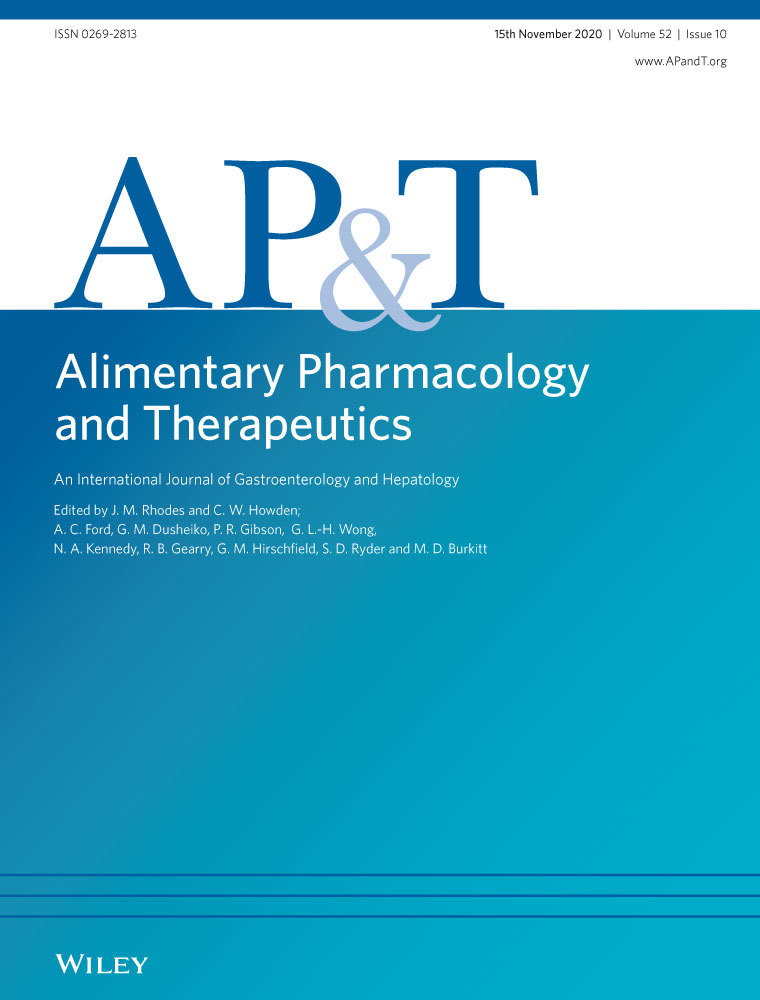Letter: rationalising aminosalicylates in inflammatory bowel disease—authors' reply
Abstract
LINKED CONTENT
This article is linked to Chapman et al and Nicolaides et al papers. To view these articles, visit https://doi.org/10.1111/apt.15771 and https://doi.org/10.1111/apt.16107
We thank Dr Nicolaides and colleagues for their interest in our review article.1, 2 We agree that emerging data support the safe withdrawal of 5-aminosalicylates (5-ASA) in patients escalated to immunomodulators. A very recent retrospective analysis of patients with ulcerative colitis (UC) receiving 5-ASA who commenced either thiopurine or methotrexate provides further important data.3 In this study of 4068 patients identified from a national administrative claims database in the United States, there was no apparent benefit to continuation of 5-ASA over 2.5 years after starting immunomodulator, with no reduction in risk of UC-related hospitalisation, surgery, relapse requiring corticosteroids or escalation to biologic therapy.
Further, data from the SECURE-IBD registry has called into question the safety of 5-ASA and sulfasalazine in the current COVID-19 pandemic.4 Of 525 cases of polymerase chain reaction-confirmed COVID-19 in both paediatric and adult patients with IBD, of which just under one-third required hospitalisation, 117 were receiving 5-ASA or sulfasalazine. Surprisingly, on multivariable regression analysis, use of 5-ASA/sulfasalazine was associated with increased risk of the primary outcome of severe COVID-19, defined as a composite of intensive care admission, ventilation and/or death, with adjusted odds ratio of 3.14 (95% CI 1.28-7.71, P = 0.01). In a direct comparison, this group also had worse outcomes from COVID-19 than those treated with anti-tumour necrosis factor therapy. Although unmeasured confounding factors cannot be excluded, it is notable that the multivariable regression analysis adjusted for multiple known risk factors for more severe COVID-19 disease course including age, gender, smoking status, comorbidities and use of systemic corticosteroids.5, 6 Adjustment was also made for inflammatory bowel disease diagnosis (Crohn's disease or UC/IBD unspecified) and for severity. While ethnicity was not adjusted for, 84.2% of patients were Caucasian. Although this apparent association between 5-ASA and worse COVID-19 outcome requires replication and ideally confirmation by identification of any underlying biological mechanism, these data potentially provide further rationale to withdraw 5-ASA therapy where possible.
ACKNOWLEDGEMENT
The authors' declarations of personal and financial interests are unchanged from those in the original article.2




